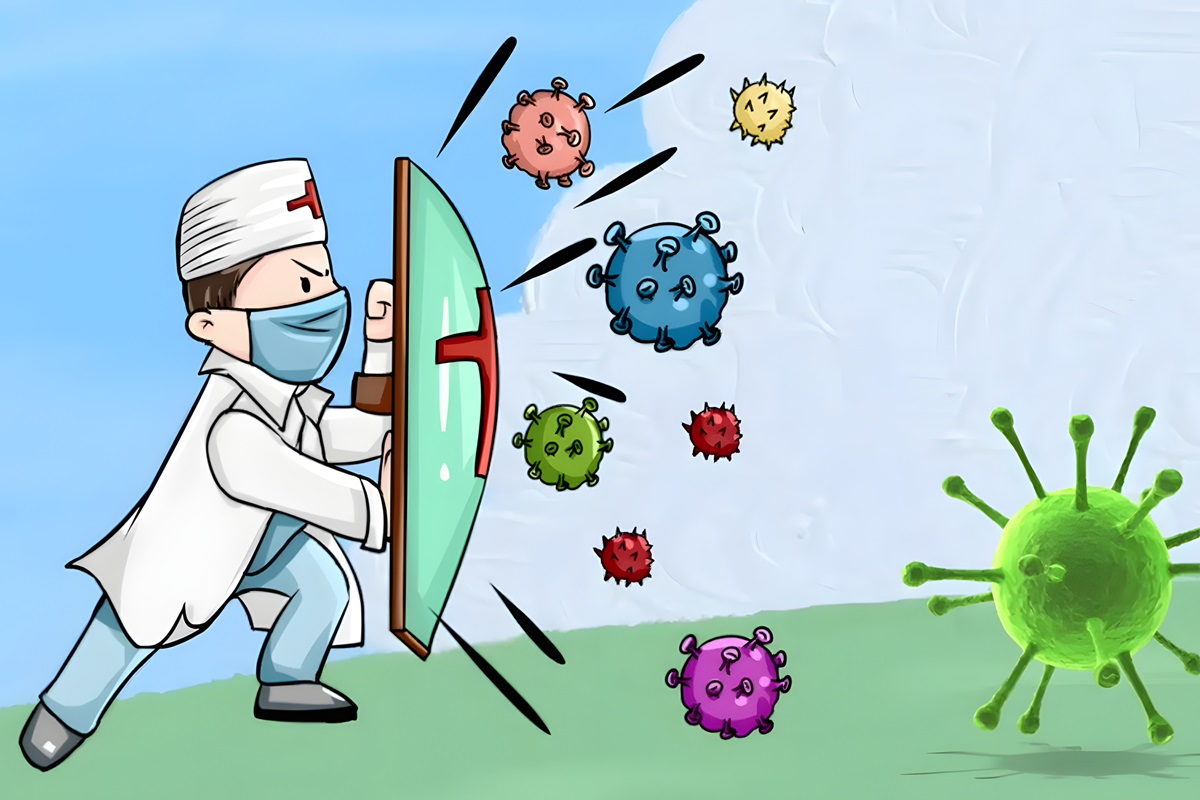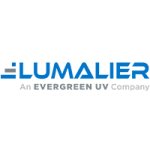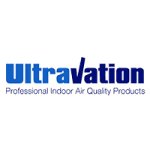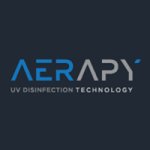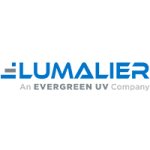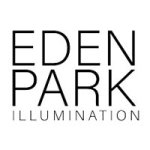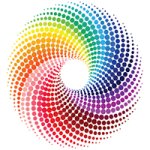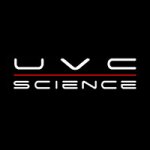Germicidal lighting
UV disinfection lighting, also known as germicidal UV lighting, refers to the use of ultraviolet (UV) light in the UV-C spectrum to kill or inactivate bacteria, viruses, and other pathogens. This method relies on the unique properties of UV-C light to disrupt the genetic material (DNA or RNA) of microorganisms, thereby preventing their ability to replicate and cause infections. UV light is categorized into three main types based on wavelength: UV-A (315-400 nm), UV-B (280-315 nm), and UV-C (200-280 nm). UV-C light, with wavelengths between approximately 200 and 280 nm, is particularly effective at germicidal action due to its ability to penetrate the outer structure of microorganisms and damage their genetic material. Because of its germicidal properties, UV-C light is utilized in various settings where maintaining a clean and sterile environment is essential, including healthcare facilities, laboratories, food processing plants, water treatment facilities, and air purification systems. The COVID-19 pandemic has particularly heightened interest in
UV disinfection lighting as a means to mitigate the spread of the virus. UV light has been shown to effectively deactivate the novel coronavirus on surfaces, making it an attractive option for disinfecting frequently touched objects and high-traffic areas. As people become more aware of the importance of cleanliness and sanitation, technologies like UV disinfection lighting are gaining attention as a complementary measure to traditional cleaning methods.
How does UV-C disinfection work
UV-C light damages the genetic material of microorganisms, such as DNA or RNA, through a process called photodimerization. This damage occurs through a process called photodimerization, where UV-C light with wavelengths between approximately 200 and 280 nanometers causes chemical bonds to form between adjacent bases in the genetic material. These bonds, known as cyclobutane pyrimidine dimers or pyrimidine (6-4) pyrimidone photoproducts, distort the structure of DNA or RNA, interfering with their normal functioning. The distortion of genetic material inhibits the microorganism's ability to replicate accurately during cell division or transcription, leading to ineffective reproduction and the inability to produce essential proteins. Additionally, UV-C light can induce the formation of reactive oxygen species (ROS) within the microorganism, which further damages cellular components, including DNA, proteins, and lipids. Ultimately, these chemical changes disrupt the normal functioning of the microorganism, ultimately leading to its inactivation or death. UV-C light's ability to induce such comprehensive damage makes it a valuable tool for sterilization and disinfection across various applications, including water treatment, air purification, and surface sterilization.
Diverse applications
UV disinfection lights find applications across a wide range of industries and settings owing to their efficacy in killing or deactivating bacteria, viruses, and other pathogens.
Healthcare facilities
UV disinfection lights are extensively used in hospitals, clinics, and healthcare facilities to supplement traditional cleaning methods and reduce the risk of healthcare-associated infections (HAIs). In healthcare settings, UV disinfection lights are utilized to sanitize various areas prone to contamination, including
patient rooms, operating theaters, medical equipment, and high-touch surfaces such as door handles and bed rails. UV disinfection lighting can target hard-to-reach areas and surfaces that may be missed by traditional cleaning methods alone. By incorporating UV disinfection into their cleaning protocols, healthcare facilities can better ensure the safety of patients, healthcare workers, and visitors. These lights help mitigate the spread of infections within healthcare environments, ultimately contributing to a safer and healthier atmosphere for all stakeholders.
Food and beverage industry
In food processing facilities, germicidal lighting plays a crucial role in maintaining food safety standards and preventing contamination. Germicidal lighting is strategically employed to sanitize various critical areas within food processing facilities, including food contact surfaces, processing equipment, and packaging materials. By targeting these surfaces with UV radiation, germicidal lighting helps to kill or deactivate any microorganisms present, reducing the risk of contamination during food production and packaging processes. The use of germicidal lighting in food processing facilities not only helps ensure the safety and quality of food products but also contributes to extending their shelf life. By eliminating or reducing the presence of harmful microorganisms, germicidal lighting helps to inhibit the growth of spoilage organisms, thereby prolonging the freshness and longevity of perishable products.
Water treatment
UV disinfection lights are an integral part of water treatment systems used in municipal water treatment plants, wastewater treatment facilities, and industrial water purification processes. They are employed to disinfect drinking water, wastewater, and process water by inactivating harmful microorganisms such as bacteria, viruses, and protozoa, thereby ensuring the safety of the water supply. In municipal water treatment plants, UV disinfection lights are employed to treat drinking water, providing an additional layer of protection against waterborne pathogens before the water is distributed to consumers. Similarly, in wastewater treatment facilities, UV disinfection is utilized as a final step to disinfect treated wastewater before it is discharged back into the environment or reused for non-potable purposes. In industrial water purification processes, UV disinfection lights play a crucial role in ensuring the quality of process water used in various
industrial applications. By effectively inactivating harmful microorganisms, UV disinfection helps maintain the integrity of industrial processes and prevents contamination of products.
Air purification
Germicidal lighting is incorporated into air purification systems to enhance indoor air quality by eliminating airborne pathogens. In various environments such as hospitals, offices, schools, and homes, where maintaining clean and healthy indoor air is essential, germicidal lighting integrated into air purification systems serves as a proactive measure to reduce the risk of respiratory infections. These systems work by continuously circulating indoor air through filters and exposing it to UV-C light, effectively sterilizing the air and neutralizing any harmful pathogens present. By disinfecting indoor air, germicidal lighting helps create a safer and healthier environment for occupants, particularly in settings where people spend extended periods indoors. This is particularly relevant in places like hospitals, where patients may have compromised immune systems, or in schools and offices, where large numbers of people gather, increasing the potential for the spread of airborne illnesses.
Laboratories and cleanrooms
Germicidal lighting is essential in laboratories, cleanrooms, and pharmaceutical manufacturing facilities to maintain sterile conditions and prevent cross-contamination. These environments require stringent measures to prevent cross-contamination and ensure the integrity of experiments, research, and production processes. In such settings, germicidal lights emit UV radiation which possess germicidal properties capable of deactivating or destroying microorganisms such as bacteria, viruses, and fungi. This is crucial for ensuring the accuracy and reliability of experimental results, as well as the safety and efficacy of pharmaceutical products. Germicidal lighting helps safeguard the integrity of research and production processes by providing a continuous disinfection solution that targets both surfaces and the surrounding air. The ability to effectively eliminate microbial contamination helps uphold strict hygiene standards and ensures the reliability and safety of scientific endeavors and pharmaceutical products.
Public transportation and shared spaces
UV disinfection lights are seeing growing usage in public spaces, transportation vehicles, and high-traffic areas as part of efforts to enhance cleanliness and minimize the spread of infectious diseases. In environments such as airports, train stations, buses, and subway systems, where large numbers of people gather and high-touch surfaces are abundant, UV disinfection lights offer a proactive approach to surface disinfection. By targeting surfaces frequently touched by passengers and commuters, such as handrails, seats, and ticket machines, these lights help to reduce the presence of pathogens and lower the risk of disease transmission. The deployment of UV disinfection lights in public spaces and transportation vehicles complements traditional cleaning methods and provides an additional layer of protection against infectious diseases. As concerns about public health and hygiene continue to rise, the adoption of UV disinfection technology in these settings reflects a proactive approach to safeguarding the well-being of passengers, commuters, and the general public.
Residential settings
Germicidal lighting finds application in residential settings, especially in areas where maintaining high standards of hygiene is crucial, such as kitchens, bathrooms, and laundry rooms. In residential environments, germicidal lighting can be integrated into various systems to provide comprehensive disinfection. For example, UV-C light can be incorporated into HVAC (heating, ventilation, and air conditioning) systems to disinfect indoor air, reducing the presence of airborne pathogens. Similarly, UV-C light can be integrated into water filtration systems to disinfect water, ensuring its safety for drinking and other domestic uses. Additionally, portable devices equipped with germicidal UV-C light are available for disinfecting surfaces in residential settings. These devices can be used to sanitize countertops, tabletops, bathroom fixtures, and other high-touch surfaces, providing an extra layer of protection against harmful pathogens.
Types of UV-C lights
UV-C lighting technologies encompass various methods of generating ultraviolet (UV) radiation in the UV-C spectrum. Mercury-based UV-C lamps contain mercury vapor enclosed in a glass tube. When electricity is applied, the mercury vapor emits UV-C radiation. Mercury-based UV-C lamps are commonly used in air and surface disinfection systems in commercial, industrial, and healthcare settings. They come in various forms, including low-pressure lamps, medium-pressure lamps, and amalgam lamps, each with specific applications and performance characteristics. Low-pressure mercury lamps produce a broad spectrum of UV-C light, with peaks at around 254 nanometers (nm), which is particularly effective for germicidal applications. Similar to low-pressure mercury lamps, medium-pressure mercury lamps contain mercury vapor and emit UV-C radiation when electrified. However, they operate at higher pressures, resulting in a broader spectrum of UV-C light, including wavelengths outside the germicidal range. Medium-pressure mercury lamps are used in applications such as curing of inks, coatings, and adhesives, as well as in certain industrial processes. Amalgam lamps are a type of low-pressure mercury lamp that contains a special amalgam of mercury and other metals. They are designed to operate at higher temperatures and pressures, allowing for increased UV-C output and efficiency. Amalgam lamps are often used in water treatment systems where high UV-C doses are required for disinfection. Pulsed Xenon UV-C lamps use xenon gas and an electrical pulse to generate intense bursts of UV-C light. Pulsed xenon UV-C lamps are known for their rapid disinfection capabilities and are often used in environments where quick turnaround times are required, such as hospital rooms, operating theaters, and food processing facilities. They provide broad-spectrum UV-C light, which can effectively target a wide range of microorganisms.
UV-C LEDs are semiconductor devices that emit UV-C radiation when an electrical current passes through them. They offer advantages such as compact size, energy efficiency, and durability. UV-C LEDs are increasingly used in portable disinfection devices, water purification systems, and other applications where precise control of UV output and low power consumption are essential.
UV-C LEDs
LEDs are semiconductor devices that emit light when an electric current passes through them. Unlike traditional light sources, such as incandescent or fluorescent lamps, LEDs can be engineered to emit light at specific wavelengths with high precision. In the context of UV-C LEDs, spectral precision refers to the ability to control the wavelength of the emitted UV-C radiation with great accuracy. This precision enables UV-C LEDs to target specific wavelengths within the UV-C spectrum (typically between 200 and 280 nanometers), which are most effective at deactivating or destroying microorganisms like bacteria, viruses, and fungi. UV-C LEDs can be tuned to emit radiation at wavelengths that are most effective at disrupting the DNA or RNA of microorganisms, maximizing their germicidal performance. By targeting specific wavelengths, UV-C LEDs can minimize the emission of wavelengths that are less effective at germicidal action or may cause unwanted side effects, such as skin or eye irritation. UV-C LEDs can be tailored to meet the requirements of specific disinfection or sterilization applications. For example, LEDs with different wavelengths may be used to target different types of microorganisms or achieve optimal performance in different environmental conditions. Spectral precision allows UV-C LEDs to emit light only at the desired wavelengths, minimizing energy wastage and maximizing the efficiency of the disinfection process.
Spectral controllability
UV-C LEDs offer significant advantages in terms of energy efficiency, compactness, instant operation, longer lifespan, and environmental safety when compared to traditional mercury-based UV-C lamps. UV-C LEDs typically consume less energy than mercury-based lamps, resulting in lower operating costs and reduced energy consumption. UV-C LEDs are smaller and more compact than mercury-based lamps, allowing for greater flexibility in design and integration into various devices and systems. UV-C LEDs can be switched on and off instantly, without the need for warm-up or cool-down periods. This instant operation allows for precise control over UV exposure and eliminates the need for preheating, enhancing efficiency and convenience. UV-C LEDs generally have a longer operational lifespan compared to mercury-based lamps. This extended lifespan reduces the frequency of replacements and maintenance, resulting in lower lifecycle costs. UV-C LEDs do not contain mercury, unlike traditional mercury-based lamps. This eliminates the environmental and safety concerns associated with mercury, making UV-C LEDs more environmentally friendly and safer to handle and dispose of. Despite these advantages, UV-C LEDs also have some limitations. UV-C LEDs typically produce lower UV output compared to mercury-based lamps, which can limit their effectiveness in certain disinfection applications, especially when treating larger volumes of air or surfaces. UV-C LEDs may have a higher initial cost compared to traditional mercury-based lamps, although this cost difference is decreasing as UV-C
LED technology advances and becomes more widely adopted.
Types of disinfection
UV-C lights are commonly used for disinfecting surfaces, water, and air due to their ability to effectively deactivate or destroy microorganisms such as bacteria, viruses, and fungi.
Surface disinfection
UV-C lights are used to disinfect surfaces in various settings, including hospitals, laboratories, food processing facilities, and homes. Surface disinfection with UV-C lights involves irradiating surfaces with UV-C radiation, typically using handheld devices or stationary fixtures. When exposed to UV-C light, microorganisms on surfaces are rendered inactive, preventing their ability to replicate and cause infections. UV-C surface disinfection is particularly effective for high-touch surfaces, such as doorknobs, countertops, and medical equipment, where microbial contamination is a concern.
Water disinfection
UV-C lights are also employed for disinfecting water in applications such as drinking water treatment, wastewater treatment, and water purification processes. In water disinfection, UV-C radiation is used to target and inactivate microorganisms present in the water, including bacteria, viruses, and protozoa. UV-C water disinfection systems typically consist of UV lamps enclosed in a chamber through which water flows. As water passes through the chamber, it is exposed to UV-C radiation, effectively sterilizing it and making it safe for consumption or discharge.
Air disinfection
UV-C lights are increasingly being used for air disinfection in indoor environments to reduce the transmission of airborne pathogens. Air disinfection with UV-C lights involves installing UV-C lamps within HVAC (heating, ventilation, and air conditioning) systems or using standalone air purifiers equipped with UV-C lamps. As air passes through the UV-C irradiated zone, airborne microorganisms are exposed to UV-C radiation, which disrupts their DNA or RNA, rendering them inactive. UV-C air disinfection is particularly beneficial in settings such as hospitals, schools, offices, and public transportation where airborne transmission of pathogens is a concern.
UV-C disinfection lights
UV-C disinfection lights come in various forms, each designed for specific applications and environments. The selection of the appropriate form depends on factors such as the size of the area to be disinfected, the type of surfaces or objects to be disinfected, and the specific requirements of the disinfection task.
Fixed fixtures
Stationary UV-C disinfection systems are permanently installed in specific areas or facilities. They typically consist of UV-C lamps mounted in fixtures positioned strategically to irradiate surfaces or air within a defined space. Fixed fixture systems are commonly used in healthcare facilities, food processing plants, and laboratories for continuous disinfection of patient rooms, operating theaters, production lines, and other critical areas.
Mobile UV-C disinfection units
Mobile UV-C disinfection units are portable devices equipped with UV-C lamps that can be moved from one location to another as needed. These units are often used for targeted disinfection of surfaces and air in various settings, including hospitals, schools, offices, and public transportation. Mobile units provide flexibility and convenience, allowing disinfection to be carried out in specific areas or in response to outbreaks or contamination incidents.
Handheld UV-C disinfection devices
Handheld UV-C disinfection devices are compact and lightweight tools that can be operated manually to disinfect surfaces quickly and efficiently. They are commonly used in healthcare settings, laboratories, and other environments where rapid disinfection of high-touch surfaces is required. Handheld devices offer versatility and ease of use, allowing users to target specific areas or objects with precision.
UV-C disinfection chambers
UV-C disinfection chambers are enclosed chambers equipped with UV-C lamps that disinfect items placed inside them. These chambers are used for disinfecting personal protective equipment (PPE), medical devices, electronic gadgets, and other objects that may harbor pathogens. UV-C chambers provide a convenient and effective method of disinfection for items that cannot be easily disinfected using other methods.
UV-C HVAC systems
UV-C disinfection systems integrated into HVAC (heating, ventilation, and air conditioning) systems are designed to disinfect air circulating through ductwork and HVAC equipment. These systems typically consist of UV-C lamps installed within the HVAC system to irradiate air as it passes through. UV-C HVAC systems help improve indoor air quality by reducing airborne pathogens and allergens, making them ideal for use in commercial buildings, schools, offices, and residential homes.
